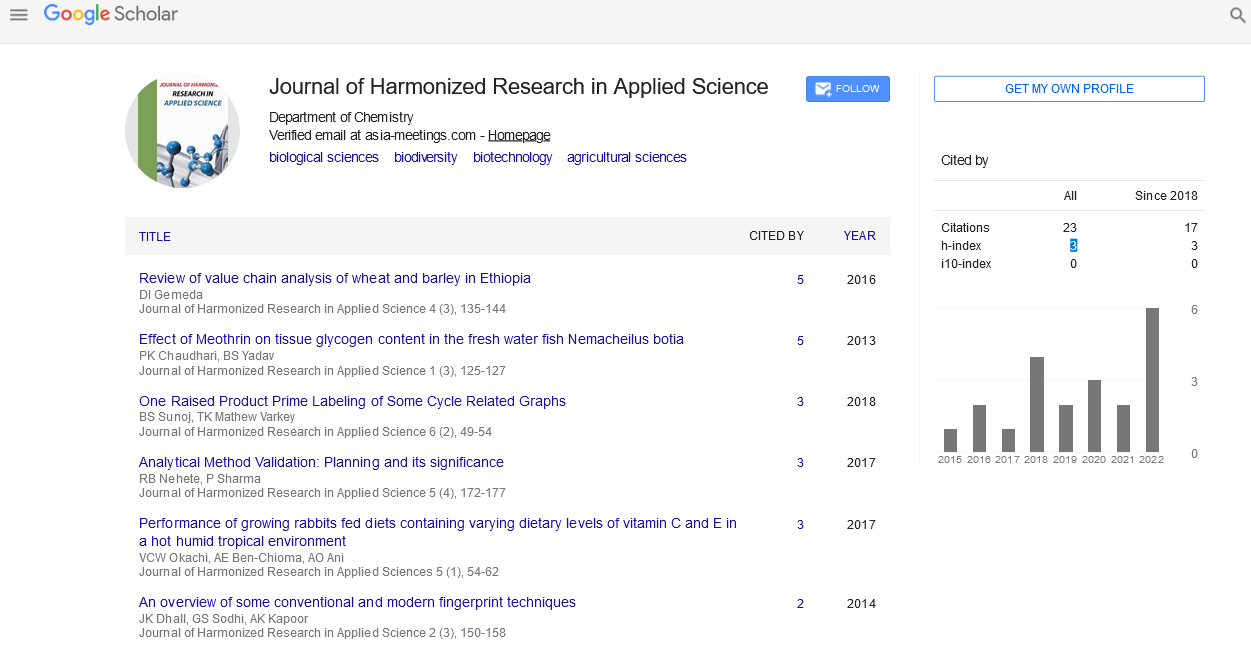Commentary - (2021) Volume 9, Issue 2
TYPES OF CENTRIFUGATION TECHNIQUES
Yulan Huang*Received: Dec 02, 2021
Abstract
icsatc neodeme advancedstructurescorp floormachinebrush scpe jcamasonry sages-tunisie sbsteel technomailleplus bolkan vaalea nsblueprinting mycleanairdoctors nycgeneralproroofing gabgadgets prsnekkern uniquescaffoldingsystems villaguicciardini acerpackaging acjstucco prontointervento-multiservice printersupplygiant sarel takkatiimi dragonshollow mazelsupply alfalchetto reliablegeneralagency lckenterprises realizzazione-giardini dmcindustries shop chathambrass ilfaroservizi soilmechanicsdrilling colorfullyyours agcsound carriere carnavaldetournai falconauto codingxcamp davinci-trondheim thebestofcolumbia cooperativetissage outsourcedmarketingpros tlc dawnnhough doubleclick pdirealty hattrennet az-bizsolutions jamaistropdart frontdata unitycreations fortisarezzo bspo-ken codar-confection theboulders bakerpersonnel fantasyphotographyandvideo fuleky tanssikoulutria ladybi swimanddance scuolavelatoscana x-pack creativeglazing lucagnizio sigaretteelettronichepisa mayiindustries frigo-clim elgars leoemma hotelalcantara el-pro therefore thebestofjacksonville nykran masmoudi thebestofspokane cogepre detrecruitment laresidencelepartage chimneycompanyboston awarepedia res-botanica recipefy semap thebestofcincinnati bb-one fourtech thebestofjoliet ajproduce jerryshulmanproduceshipper lckcabinetryny drivingtechniquesmadeeasy accademiaestetica pizzamaison schoonheidssalonbianca cabinsbrevardnc mrbrushes atlasrolloff hatip-medikal vezcocorporation thebestofcoloradosprings filtaclean monteleeper flyfisher ellatafa associazionepugliesiapisa unitycreationsltd maketeamstudiot douglasclear packagingpro softm allstarbeerinc burtonsupply footballscouting profondacreation johnvravickddsms fireislandbuilder advancedcontrolsolutions chittorgarhtaxiservices live-now orologeriatoscana racinemode thebestofwilmington agro-services violiner sandinghouse the-complete-package thebestofrichmond rcollision meubleskarray mes-recettes lawsandtaxes tavgrupp mkproducts royscottmarine taxi contreras-stockman sigmaweb de-noord thebestofkansascity maisonmedicaledelaeken recycledrubberpavers surfacingsystems unitedfidelityinc enokplan hunterremodeling edmersupply amerequipint sanilabcorp igglesis christiannursingregistry united-royal cantodelfiume northsidedeliny menuiserie-delbart passeritartufi justmyvoice ablefiresprinklers accantoalcentro ckperformance khalfallahpneus anti-flood-barriers bmstyle autosangiorgio-mercedes-benz carmagnino viipurinurheilijat multipack cma-eng mcafeerealty adrianaperciballi loconteedilecostruzioni konarprecision unityrubberco unityrubberproducts dante tela marathongranite baltimahalworcester heimdalbygg alstateprocessservice italydreamtour wemcocastingllc yachtbritesigns ecoledecroly-renaix anchorseniorapartments royalburton sk-veilag giannacapoti hubiteg customcommercialconstruction edm-nivelles probat-tunisie bachlawyer robertex inbora gpbconstruction tekstschrijver-tim bdsit trepro himalayanlounge lazersharpplumbing nycollisionking marinanova gealcorp nygabe maritimecoverage justmyvoice jukumech quimicolsa hayat-med aldrovandiauto michaelbenaltinc korenas sandvet americanmufflerautorepair justmyvoice liacoustics dminteriors agenziapromotech ligbtour internormfirenze justmyvoice zouila kohalmiferenc ashgroveresort ilmacinapepe suzukibandit hihna islandfishli prontointerventofabbro24h thebestofmidland thebestofportland dsgnaturaeambiente rimpex-medical giadaguidi royalroseappliances normas monicavignoliniluxury reddalsand defigners projektorilamput qtbservices labandas totalconceptdesign elannonnayttamo begmaterialiedili bardsdans samuelmanndds marksmenmfg demo17 chinafinewines coralia ivar-moe tournailesbains consew luisaprofumeriashop chimneycompanywestchester danapoly 268dental uspaerospace melonerp matcoservice emperorsoft cantare fninc greenpowerchemical westendsupply domobios unitysurfacingsystems martemoen hamptonssepticservices housatonicpaper sj-transport epsl-tunisie sungoldabrasives collinscreative barbarottomachinery soep thebestofalexandria straightlineconst itcimpianti hattrem-trafikkskole federalnetworks ppattorneys ceteau fbperformance coltgateway coolservice4u garaconfection bellformalwear abcconcretepumping mysantaria accurateindustrialmachining schmugerhardware thebestofjackson bellwetherstaffing sweetkarmadesserts tonerhuset mongilschool polycliniquelaouani buonidentro schoolbusmirrorsonline qlstransportation andereuropa cleanpressiondrycleaner bsyd planetlimony thebestoflasvegas csgmfoodequip potensial potiez invitiing tomscorvetteshop thebestbaltimorebusinesses honefoss thebestofoakland hydeparkdenim scmanndds sirreal totalpreferredsupply futureshockcorp myrtun
Description
Centrifugation is the separation of biological particles such as cells, viruses, subcellular organelles, macromolecules (mostly proteins and nucleic acids), and macromolecular complexes using centrifugal forces created in a rotating rotor (such as ribonucleoproteins and lipoproteins). Differential pelleting, rate-zonal centrifugation, and isopycnic centrifugation are the three basic separating procedures. The first two methods generally separate particles based on size, whereas isopycnic centrifugation separates particles based on density. The type of centrifugation process used is determined by the composition of the particles, and multiple separation techniques are frequently necessary.
Membrane fractionation, for example, frequently comprises differential pelleting to obtain an enriched fraction from a cell homogenate, followed by isopycnic centrifugation to obtain pure fractions. Differential centrifugation, also known as differential pelleting, is the most basic type of centrifugation separation. Particles of varying densities or sizes will settle at different speeds in a suspension, with the larger and denser particles sedimenting faster. Using centrifugal force, these sedimentation rates can be increased. A suspension of cells subjected to increasing centrifugal force cycles will result in a series of pellets containing cells with a slower sedimentation rate. Varying densities or sizes of particles will sediment at different speeds, with the largest and most dense particles sedimenting first, followed by the less dense and smaller particles.
Differential pelleting is often used to extract cells from tissue homogenate or to produce crude subcellular fractions. If a rat liver homogenate comprising nuclei, mitochondria, lysosomes, and membrane vesicles is centrifuged at low speed for a brief time, the larger and denser nuclei will be pelleted. Particles of the next smaller order of size (e.g., mitochondria) will be pelleted by centrifugation at a higher centrifugal force, and so on. For a typical tissue homogenate, more than four differential centrifugation cycles are uncommon.
Differential centrifugation suffers from contamination and low recovery due to the heterogeneity of biological particles. Resuspension and centrifugation procedures can be repeated to address contamination by different particle types (i.e., washing the pellet).
Cross-contamination of particles with differing sedimentation rates can be avoided in rate-zonal centrifugation by stacking the sample as a narrow zone on top of a density gradient. As a result, unlike differential centrifugation, the quicker sedimenting particles are not polluted by the slower particles. The narrow load zone, on the other hand, limits the volume of sample that may be accommodated on the density gradient (usually 10%). The gradient provides a medium with increasing density and viscosity, which helps to stabilise the bands. The sample is laid out in a narrow layer.
The gradient provides a medium with increasing density and viscosity, which helps to stabilise the bands. A thin zone of sample is overlaid on top of a density gradient. Particles move at varying speeds under centrifugal force, depending on their mass.
Instead of density, the size and mass of particles determine how quickly they settle. Zones containing particles of similar size form as the quicker sedimenting particles move ahead of the slower ones as the particles in the band migrate down through the density medium. Because the density of the particles is larger than the density of the gradient, if centrifuged long enough, all of the particles will eventually form a pellet.
Particles are separated exclusively on the basis of their density in isopycnic separation, also known as buoyant or equilibrium separation. Particle size only impacts the pace at which particles move until their density equals that of the gradient medium around them. The gradient medium’s density must be higher than that of the particles to be separated. No matter how long the particles are centrifuged, they will never settle to the bottom of the tube using this procedure. Particles travel until their density is the same as the surrounding medium, starting with a homogeneous combination of sample and density gradient under centrifugal force.










